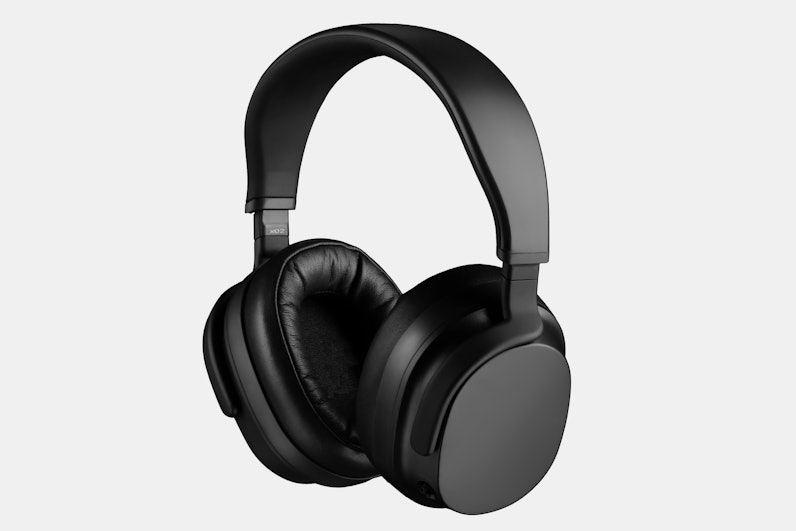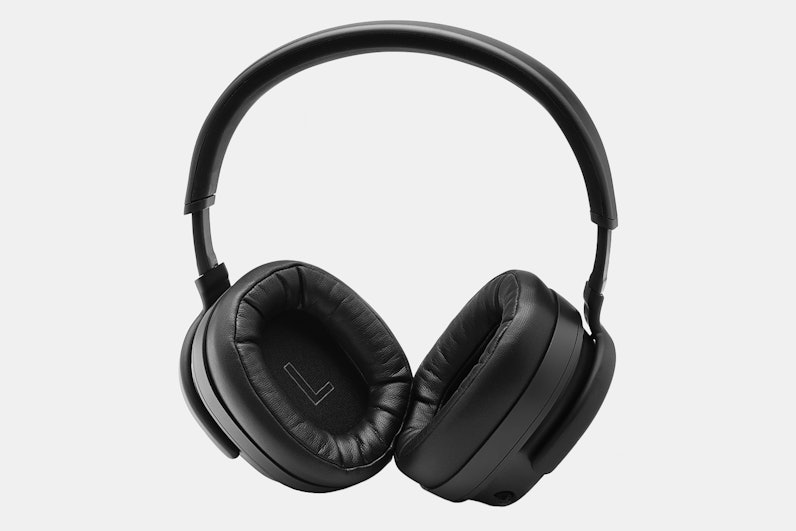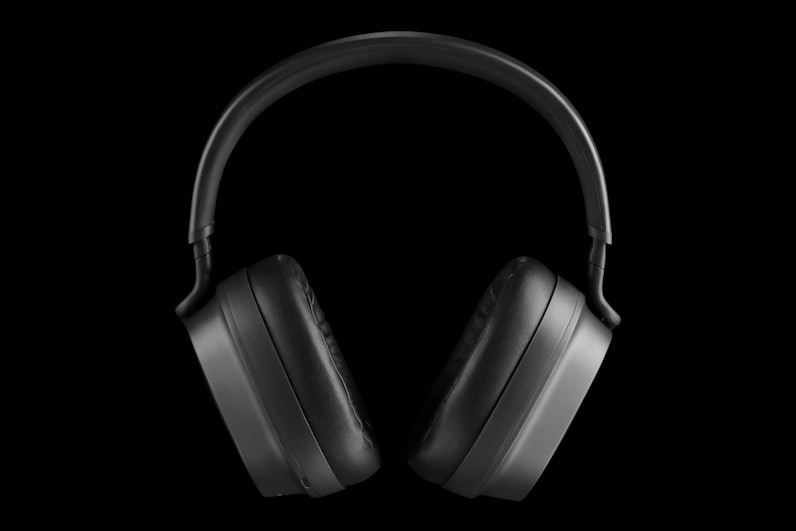WillBright
100+ Head-Fier
- Joined
- Nov 19, 2014
- Posts
- 138
- Likes
- 304
Hey Friends,
Over the years we’ve seen countless discussions full of audiophiles wishing for a strong wireless offering. With the wireless headphone space focused on noise-canceling over audio quality, it’s been tough for us to leave the Altoids tins and rubber-bands behind.
Today I’m excited to finally announce the Drop + THX Panda wireless headphone; the first portable wireless headphone to deliver full-system sound.

Driver
Panda utilizes a Planar Ribbon Driver. This driver type is a subset of planar magnetic drivers that utilizes a dual sided magnetic structure on a braced diaphragm to deliver a carefully-tuned, phase-correct sound. This driver technology has only been used in one series of headphones previously, the Oppo PM-1, PM-2, and PM-3.
It's the PM3 driver with damping improvements. We acquired the Planar Ribbon tech and all existing driver designs from Oppo and redesigned the damping system to resolve some of the darkness that the community didn't like about the PM-3.

Amp
Feeding the Planar Ribbon Driver, you’ll find a discrete THX-AAA amplifier implementation designed by our team in collaboration with THX. This amplifier can drive Panda to comfortable listening volumes for everyone with headroom to spare. BT Chipset To handle the audio transfer + conversion, Panda features the Qualcomm QCC5124 chipset. Our implementation of this chipset supports LDAC, aptX, aptX HD, aptX adaptive, AAC, and SBC.
DSP Panda’s sound is the result of passive acoustic tuning, there’s no DSP in Panda. If there's enough interest, we may be able to create an EQ app in the future. There's DSP on the chipset, it's just turned off, so with user-upgradable firmware, a lot is possible.
Battery
Battery life is 30+ hrs, with Quick Charge giving you 3+ hrs on 10 minutes of charge via USB-C. We’re in the midst of aligning our testing criteria with the market (is bose testing at 50% volume or 20%? is sony testing with ANC on full or half? etc), but we expect Panda to exceed the battery life of major ANC headsets.
Isolation
Panda is fully closed and designed for strong acoustic isolation. We’re waiting on the testing lab to confirm a db measurement, but subjectively, it’s on-par with deep-sitting IEM isolation.
Compatibility
Panda has a passive input, enabling use with external amplifiers and non-BT devices like the Nintendo Switch.
Weight
Despite the battery, amplifier, and heavy drivers, we’ve been able to keep Panda’s weight under 350g.
Communication
Panda features dual mics on the right earcup for effective communication and virtual assistants.
Materials
the frame is made of plastic (most of it, for weight) and cast aluminum (gimble arms, hinges, etc). Earpads are a plush foam wrapped in premium protein leather.
The headband is a smooth rubber (lots of care has been taken to achieve the right level of "grip", it'll stay on your head, but won't pull out your hair) and we designed the geometry of the headphone so the weight is held by the earcups instead of the headband.
Clamping force is less than a new HD6XX and more than a new K7XX, I'd call it "comfortable, but certain".
Price
Panda’s MSRP is $399.99
Launch Timing
Panda will launch at the end of January (targeting the 27th right now, may change) and units will ship closer to summer ("summer" is a reasonable range, could be sooner, just depends on details we don't know today).

We're going to create a host of content and events around this launch, including sending review samples, publishing measurements, and hosting a listening party at our office in SF prior to launch.
And to jump ahead, yes, it's called Panda; everyone loves pandas.
Thanks for your interest and I look forward to reading your thoughts in the discussion!
Over the years we’ve seen countless discussions full of audiophiles wishing for a strong wireless offering. With the wireless headphone space focused on noise-canceling over audio quality, it’s been tough for us to leave the Altoids tins and rubber-bands behind.
Today I’m excited to finally announce the Drop + THX Panda wireless headphone; the first portable wireless headphone to deliver full-system sound.

Driver
Panda utilizes a Planar Ribbon Driver. This driver type is a subset of planar magnetic drivers that utilizes a dual sided magnetic structure on a braced diaphragm to deliver a carefully-tuned, phase-correct sound. This driver technology has only been used in one series of headphones previously, the Oppo PM-1, PM-2, and PM-3.
It's the PM3 driver with damping improvements. We acquired the Planar Ribbon tech and all existing driver designs from Oppo and redesigned the damping system to resolve some of the darkness that the community didn't like about the PM-3.

Amp
Feeding the Planar Ribbon Driver, you’ll find a discrete THX-AAA amplifier implementation designed by our team in collaboration with THX. This amplifier can drive Panda to comfortable listening volumes for everyone with headroom to spare. BT Chipset To handle the audio transfer + conversion, Panda features the Qualcomm QCC5124 chipset. Our implementation of this chipset supports LDAC, aptX, aptX HD, aptX adaptive, AAC, and SBC.
DSP Panda’s sound is the result of passive acoustic tuning, there’s no DSP in Panda. If there's enough interest, we may be able to create an EQ app in the future. There's DSP on the chipset, it's just turned off, so with user-upgradable firmware, a lot is possible.
Battery
Battery life is 30+ hrs, with Quick Charge giving you 3+ hrs on 10 minutes of charge via USB-C. We’re in the midst of aligning our testing criteria with the market (is bose testing at 50% volume or 20%? is sony testing with ANC on full or half? etc), but we expect Panda to exceed the battery life of major ANC headsets.
Isolation
Panda is fully closed and designed for strong acoustic isolation. We’re waiting on the testing lab to confirm a db measurement, but subjectively, it’s on-par with deep-sitting IEM isolation.
Compatibility
Panda has a passive input, enabling use with external amplifiers and non-BT devices like the Nintendo Switch.
Weight
Despite the battery, amplifier, and heavy drivers, we’ve been able to keep Panda’s weight under 350g.
Communication
Panda features dual mics on the right earcup for effective communication and virtual assistants.
Materials
the frame is made of plastic (most of it, for weight) and cast aluminum (gimble arms, hinges, etc). Earpads are a plush foam wrapped in premium protein leather.
The headband is a smooth rubber (lots of care has been taken to achieve the right level of "grip", it'll stay on your head, but won't pull out your hair) and we designed the geometry of the headphone so the weight is held by the earcups instead of the headband.
Clamping force is less than a new HD6XX and more than a new K7XX, I'd call it "comfortable, but certain".
Price
Panda’s MSRP is $399.99
Launch Timing
Panda will launch at the end of January (targeting the 27th right now, may change) and units will ship closer to summer ("summer" is a reasonable range, could be sooner, just depends on details we don't know today).

We're going to create a host of content and events around this launch, including sending review samples, publishing measurements, and hosting a listening party at our office in SF prior to launch.
And to jump ahead, yes, it's called Panda; everyone loves pandas.
Thanks for your interest and I look forward to reading your thoughts in the discussion!



























